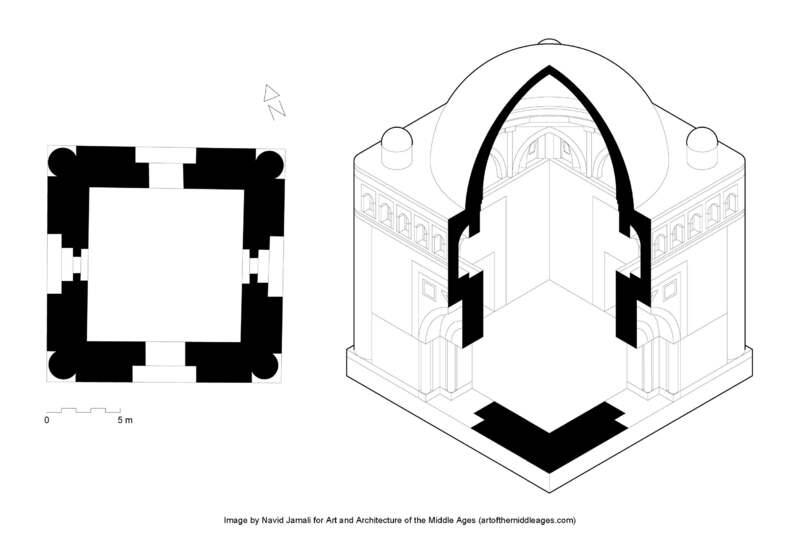Samanid Mausoleum
Type:
Mausoleums
Date:
907
Location or Findspot (Modern-Day Country):
Uzbekistan
Description:
Paying nominal fealty to the Abbasid Caliph in Baghdad, the Samanid Emirate ruled Central Asia for a century from their capital at Bukhara (892–999). They minted their own widely used currency, participated in mercantile activity on the Silk and Fur Routes (along the steppes), and, claiming descent from the Sasanians, promoted the Persian language. A cubic mausoleum (about 10 m each side) was built in Bukhara for the founder of the dynasty, Ismail ibn Ahmad (d. 907). It reused the chahar taq form of Sasanian fire temples to stress the Samanids' fictional ancestry but, unlike most such temples, used baked brick as the construction material. The walls are made of bricks laid in elaborate patterns, some of which evoke Sasanian stucco, textiles, or metalwork (especially the pearl-like borders and wing motif above the door). At the top is an arcade of carved stucco. Inside, squinches effect the transition from square base to dome, and the squinch fragmented into multiple planes points forward to the decorative muqarnas common in later Islamicate architecture. Isma'il, his father, and his grandson were eventually buried in the mausoleum, and local reverence for the Samanid dynastic founder imbued his tomb with spiritual power and attracted pilgrimage (ziyara) and burials around the tomb.
Relevant Textbook Chapter(s):
5
Image Credits:
Linda Safran; Navid Jamali








